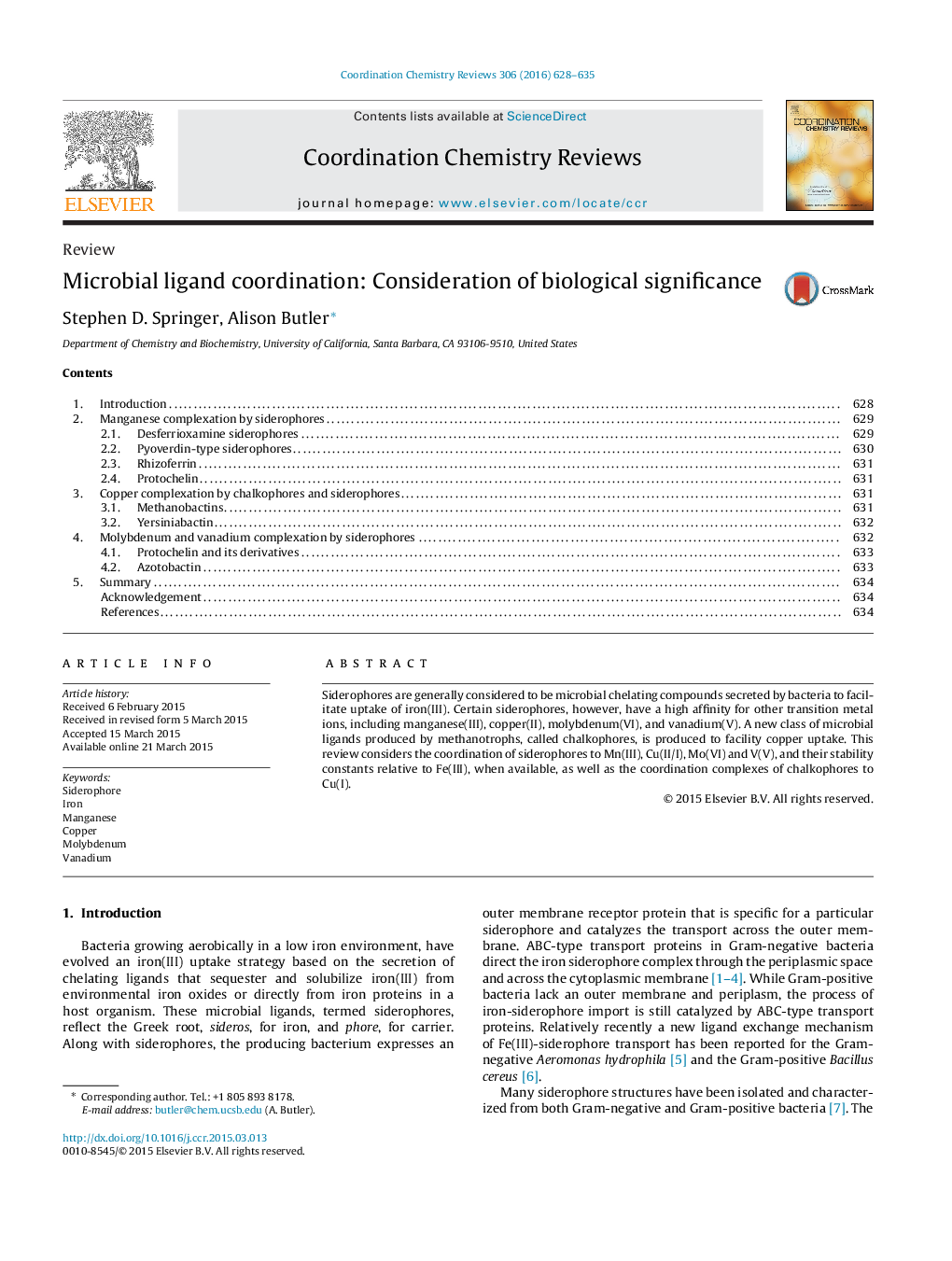| Article ID | Journal | Published Year | Pages | File Type |
|---|---|---|---|---|
| 1300881 | Coordination Chemistry Reviews | 2016 | 8 Pages |
•Siderophore complexation to transition metals of biological significance is reviewed.•Certain siderophores coordinate Mn(III) with higher affinity than Fe(III).•Chalkophore ligands from methanotrophs coordinate Cu(I) and facilitate Cu uptake.•Molybdate and vanadate uptake by bacteria is promoted by certain siderophores.
Siderophores are generally considered to be microbial chelating compounds secreted by bacteria to facilitate uptake of iron(III). Certain siderophores, however, have a high affinity for other transition metal ions, including manganese(III), copper(II), molybdenum(VI), and vanadium(V). A new class of microbial ligands produced by methanotrophs, called chalkophores, is produced to facility copper uptake. This review considers the coordination of siderophores to Mn(III), Cu(II/I), Mo(VI) and V(V), and their stability constants relative to Fe(III), when available, as well as the coordination complexes of chalkophores to Cu(I).
Graphical abstractFigure optionsDownload full-size imageDownload high-quality image (161 K)Download as PowerPoint slide
